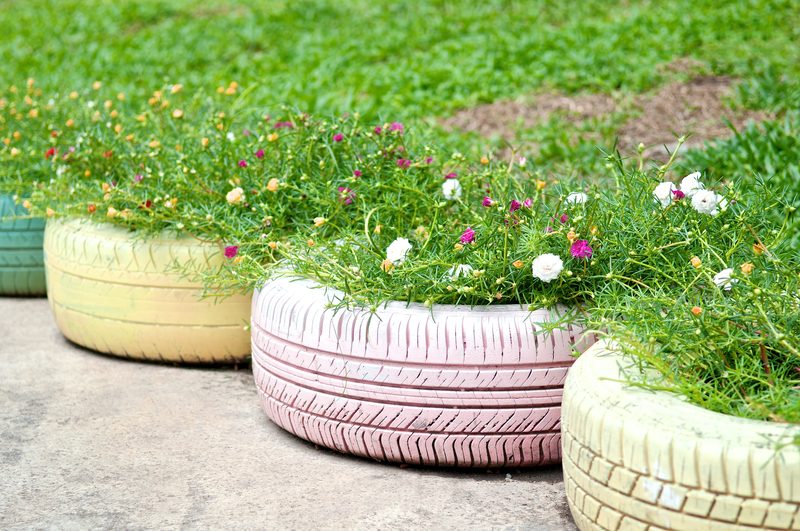The Plastic Types That Are Best Avoided
Plastic is everywhere in our lives - packaging, food containers, bottles, toys, electronics, and even clothing. While its convenience and versatility are undeniable, not all plastics are created equal. Some plastic types pose significant risks to our health, environment, and recycling systems. Knowing which plastics are best avoided is essential for making informed purchasing decisions and minimizing negative impacts.
Understanding Plastic Types: The Resin Identification Code
To help consumers and recyclers easily identify the type of plastic in common products, the Society of the Plastics Industry introduced a coding system in 1988 called the Resin Identification Code. You've likely seen this as a triangle with a number inside, usually found on the bottom of plastic products. These codes range from 1 to 7 and indicate the chemical composition of the plastic.
- Code 1: PET or PETE (Polyethylene Terephthalate)
- Code 2: HDPE (High-Density Polyethylene)
- Code 3: PVC (Polyvinyl Chloride)
- Code 4: LDPE (Low-Density Polyethylene)
- Code 5: PP (Polypropylene)
- Code 6: PS (Polystyrene)
- Code 7: Other (includes Polycarbonate, BPA-containing plastics, and more)
Let's explore which types of plastics we should avoid, why they're problematic, and what safer alternatives exist.

Top Plastic Types to Avoid for Health and Environment
1. PVC (Polyvinyl Chloride) - Code 3
- Common Uses: Food wrap, plumbing pipes, shower curtains, toys, inflatable products, medical tubing.
PVC is one of the most problematic plastics due to its high content of hazardous additives. During its manufacture, use, and disposal, PVC releases toxic chemicals such as dioxins, phthalates, lead, and other heavy metals. These toxins can leach into foods (especially fatty and acidic items) when PVC plastics are used as food containers or wraps.
Health Risks:
- Endocrine disruption: PVC often contains phthalates, which are known hormone disruptors affecting reproductive health.
- Carcinogenicity: Dioxins released from PVC production and burning are potent carcinogens.
Environmental Impact: PVC is not widely accepted in curbside recycling programs and is rarely recycled due to the complexities of its chemical composition. When incinerated or left in landfills, it pollutes air, soil, and water.
Best Practice: Avoid products made from PVC, especially those that come in direct contact with food or children's toys. Seek alternatives like glass, stainless steel, or safer plastics (codes 1, 2, or 5 for food storage).
2. Polystyrene (PS) - Code 6
- Common Uses: Disposable coffee cups, take-out containers, meat trays, egg cartons, packaging peanuts, plastic cutlery, foam packaging.
Polystyrene is commonly known as Styrofoam. It is lightweight and inexpensive, but contains the toxic compound styrene, which can leach into food and beverages, especially when heated.
Health Risks:
- Neurotoxicity: Styrene is considered a possible human carcinogen and neurotoxin, affecting the brain and nervous system.
- Liver and kidney damage: Chronic exposure to styrene can negatively impact liver and kidney function.
Environmental Impact: Polystyrene is notoriously difficult to recycle due to its low density and lack of local facilities. Most polystyrene products end up in landfills or as litter, where they fragment into microplastics that persist in the environment for centuries, harming wildlife.
Best Practice: Steer clear of foam food containers, cups, and packaging. Opt for reusable items or containers made from paper, cardboard, or recyclable plastics (codes 1, 2, 5).
3. Polycarbonate and Other Code 7 Plastics (BPA-containing Plastics) - Code 7
- Common Uses: Water bottles, baby bottles, sports equipment, compact discs, some food containers, and medical devices.
Code 7 is a catch-all category for plastics not covered by codes 1-6. The most concerning among these are BPA (Bisphenol A) compounds such as polycarbonate. BPA is an industrial chemical known to leach out of plastic, especially when heated or exposed to acidic or fatty foods.
Health Risks:
- Hormone disruption: BPA can mimic estrogen in the body, leading to reproductive, developmental, and behavioral problems.
- Increased cancer risk: Some studies suggest links between BPA exposure and certain cancers, including breast and prostate cancer.
- Developmental issues in children: Young children and fetuses are particularly susceptible to BPA's effects.
Environmental Impact: These plastics are not generally recycled and add to the overall plastic pollution problem. Open burning or improper disposal of code 7 plastics can release additional harmful compounds.
Best Practice: Avoid code 7 plastics, particularly for food and drink storage. If you need a reusable bottle or container, choose BPA-free options made of stainless steel, glass, or trusted plastics like HDPE or PP (codes 2 and 5).
Other Plastics to Exercise Caution With
Polyethylene Terephthalate (PET or PETE) - Code 1
- Common Uses: Soft drink bottles, water bottles, salad dressing containers, peanut butter jars, microwave food trays.
PET is considered safe for single use but can degrade with repeated use or exposure to heat, potentially releasing antimony and other chemicals.
Tip: Do not reuse PET bottles for drinking water or food storage. They are intended for single use!
Low-Density Polyethylene (LDPE) - Code 4
- Common Uses: Bread bags, frozen food bags, grocery bags, squeezable bottles, some food wraps.
LDPE is regarded as one of the safer plastics, though it is not accepted by all curbside recycling programs. Still, excessive use contributes to plastic pollution. Opt for reusable alternatives where possible.
How to Identify and Avoid Dangerous Plastic Types
Tips for Safely Navigating the Plastic Jungle
- Check the recycling code on plastic items: If you see codes 3, 6, or 7, it's usually best to avoid them, especially for food and drink.
- Avoid heating food in plastic containers: Heat increases the risk of chemical leaching. If you must use plastics, stick to codes 1, 2, 4, and 5.
- Choose alternatives: Use glass, ceramic, stainless steel or silicone where practical instead of plastic.
- Say "no" to plastic straws, utensils, and bags: Single-use plastics often contain dangerous chemicals and are not easily recycled.
- Avoid buying toys for children made from PVC: Look for toys labeled as "PVC-free" or "phthalate-free".
- Prefer products labeled as "BPA-free": While this isn't a guarantee of overall safety, it indicates absence of one of the most concerning chemicals found in plastics.
Eco-Friendly and Healthier Alternatives
For every problematic plastic, there are safer and more sustainable choices. Expanding your use of these can significantly reduce your exposure and environmental impact.
- Stainless Steel: Perfect for water bottles, food containers, and lunch boxes. Durable and completely inert.
- Glass: Excellent for food and drink storage, microwave safe, and does not leach chemicals.
- Food-grade Silicone: Flexible, dishwasher-safe, and heat-resistant, ideal for kitchenware and baby products.
- Paper, Cardboard, and Plant-based Materials: Great for packaging and disposable items (ensure compostability and avoid added plastic coatings).
Simple Habits to Reduce Reliance on Harmful Plastic
- Bring your own reusable bags, bottles, and cups.
- Buy in bulk and choose products with minimal or eco-friendly packaging.
- Store leftovers in glass or stainless steel instead of plastic containers.
- Choose fresh or frozen produce over items heavily packaged in plastic.
- Compost food scraps and recycle responsibly.
Frequently Asked Questions on Plastics to Avoid
Are any plastics safe?
Safer plastics include HDPE (code 2), LDPE (code 4), and PP (code 5), especially when used within their intended temperature range and not holding fatty or acidic foods. Always check for recycling codes and use plastic with caution when storing, heating, or serving food and drinks.
Why is styrofoam so bad for the environment?
Styrofoam doesn't biodegrade and is nearly impossible to recycle. It breaks into tiny fragments that pollute waterways and harm wildlife, sometimes being mistaken for food by birds and marine creatures.
Is "BPA-free plastic" always safe?
Not necessarily. Manufacturers have started using compounds like BPS and BPF instead of BPA, but these may have similar health concerns. When possible, choose non-plastic alternatives for food and drink storage.

Conclusion: Make Informed Choices, Protect Your Health and Planet
Our reliance on plastics has brought convenience but also considerable risks to health and the environment. Choosing to avoid the worst offending plastics - namely PVC (code 3), Polystyrene (code 6), and code 7 "Other" plastics (especially those containing BPA) - is a key step in safeguarding your family and the world around you. By staying informed about the plastic types best avoided and opting for safer, eco-friendly materials, you play a crucial role in promoting a cleaner, healthier, and more sustainable future.
Remember: Checking plastic codes, seeking alternatives, and embracing reusables can dramatically reduce your exposure to harmful chemicals and help address the mounting plastic pollution crisis. Let's make a conscious shift - for ourselves, for our children, and for the planet.
Related Resources
- "Plastic Pollution: The Problem and Solutions"
- "How to Read Recycling Symbols and Codes: Ultimate Guide"
- "Best Reusable Food Storage Containers for Health and Environment"